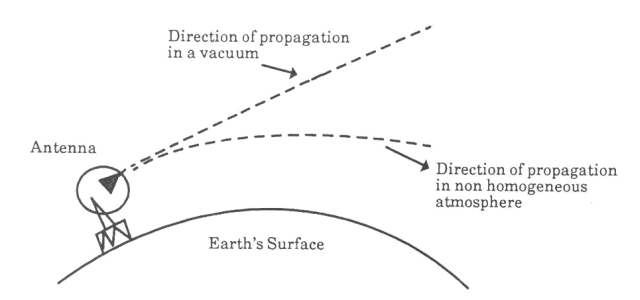Measurement Geometry
If the Earth had no
atmosphere or if we had a homogenous atmosphere, the radar beam would
be a straight line in the direction of propagation. Because we do have
an atmosphere, the rate of curvature of the radar beam relative to the
earth is a function of
- the rate of curvature of the Earth’s surface and
- the refractivity gradient
Under standard atmospheric
conditions, the radar beam has a radius of curvature which is greater
than that of the Earth. This produces a radar beam which gains height
with range. (Figure below)

Propagation of a radar beam in a vacuum and in a typical non-homogenous atmosphere.
Differential density in the atmosphere leads to the refraction of radio
waves as they move through the atmosphere. The general effect of
atmosphere is to bend the radar beams downward, which compensates the
upward bending due to earth curvature. Thus, the curvature of the earth acts to "bend" the radio wave beam upwards.

Radar Geometry / Co-ordinate system.
r=range ε= elevation β=bearing
Radar antenna pivots on vertical axis and can also vary elevation between 0 and 90°.
Usual configuration is to rotate at fixed elevation through 360°, then adjust elevation angle, and repeat as necessary.